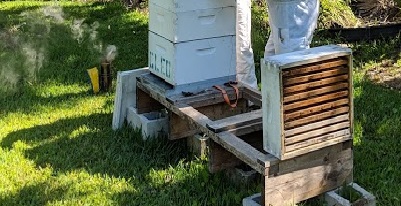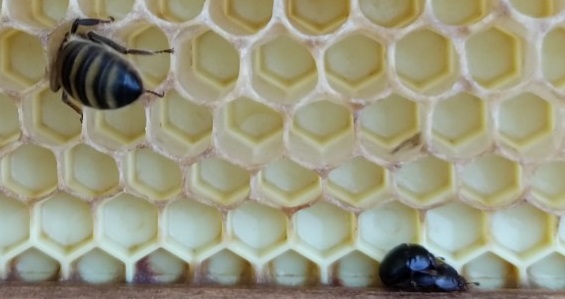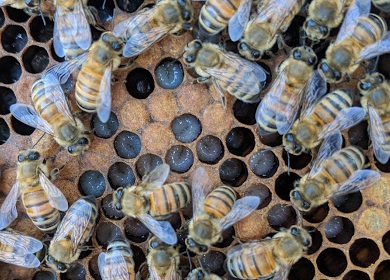Management of honey bees can seem overwhelming. Have you considered keeping honey bees but you don’t know where to start? This blog article will outline seasonal chores and time scales to prepare you for many of the tasks. One of the best pieces of advice I was given and would like to share is research and learn as much as you can before undertaking the management of honey bees. Whether you would like to be a hobbyist or commercial seller, there are many facets to consider.
The time commitment for each season depends on the amount of hives you want to keep and understanding your purpose for keeping bees. A hobbyist may manage up to ten hives while commercial beekeepers will manage over hundreds of hives. The cost commitment behind beginning beekeeping is a topic for a future blog.
One downfall to novice keepers is they tend to overwork the bee hive as they are learning about them.
A new beekeeper will need more time managing the hives. As the novice gains experience inspecting the hives, he or she will work through the hives quicker.

When I started beekeeping, I can reflect how much of an “intruder” I was to the bees. My beginner hive has a very gentle personality. I look back now and wonder how the honey bees did not set off every alarm signal as I spent well over an hour looking inside. Initially, a new hive will be checked one week after installation, two weeks after that for a few months, and then monthly after all is going well in the hive. A good rule of thumb for beginning beekeeping is to start with three hives as your initial investment. Contrasting the activity in each hive will help you learn what a healthy (or unhealthy) hive looks like. So, your time commitment as a novice is multiplied by three!
Now, let’s look at some of the seasonal chores requiring some time management skills. For more details beyond this article, check our our EDIS publication on beekeeping and time management. http://edis.ifas.ufl.edu/in848
Fall and Winter Tasks

Most of us would reason that during the fall and winter months, we should have a reduced amount of beekeeping chores. Although this is mostly true, as we move into the cooler months (I am hopeful they are coming), we are preparing for the upcoming spring. We are visually looking at the hives less, about every four to six weeks in the fall.
As our Florida winter days get even cooler, we may want to look at the hives every six to eight weeks. Allow yourself about three hours to work 10 hives in the fall and in the winter. A cold day in Florida (for the bees) is a day under 60°F. Bees maintain their hive around 98°F and when we open their hive on cold days, it takes a lot of bee energy to re-warm the colony. Instead of a visual inspection, you may want to only lift the honey supers to determine if they have enough food (honey that is) to make it through the winter months.
Other chores include ordering replacement parts/boxes, preparing and painting boxes, and placing your advanced bee and queen bee orders to ensure you beat the high demand. Lastly, cleaning and storing your equipment if not already done, should be completed. This time commitment depends on how many new boxes you order and how much clean up you have to complete.

Spring and Summer Tasks
Spring is the season where the saying “Busy as Bees” comes from. Not only have the bees picked up their activities, so have we. Although we are still allowing three hours to work up to ten hives, our inspection intervals have increased. As the bees get productive in babies and honey, we will be doing our visual inspections about every ten days in the spring and every two to three weeks in the summer. After the spring nectar flow, our time commitment decreases.
The novice beekeeper may take almost an hour to visually inspect a hive while the skilled beekeeper can note the condition of the honey bees, monitor for any significant pest problems, and determine if the honey storage is adequate in just a few minutes.
In conclusion, this article provides general estimates on managing your hives seasonally. If you would like more in depth information on beginning beekeeping or assistance with hive concerns, please contact Lisa Hickey at (941)722-4524 or Lisa.Hickey@ufl.edu. We offer beekeeping programs throughout the year. Keep an eye on our calendar. https://www.eventbrite.com/o/ufifas-extension-manatee-county-8304772301
 0
0
